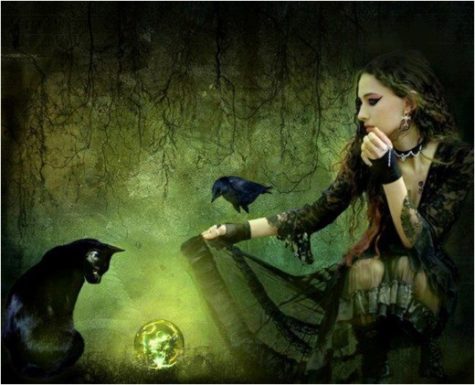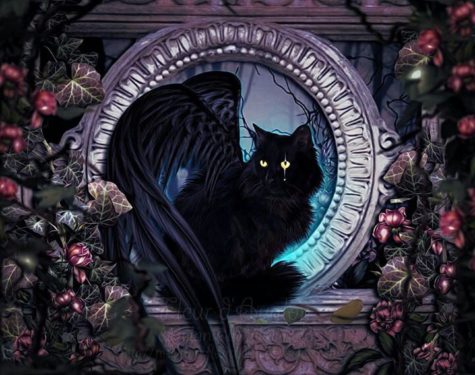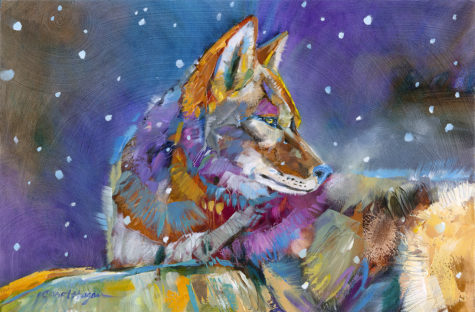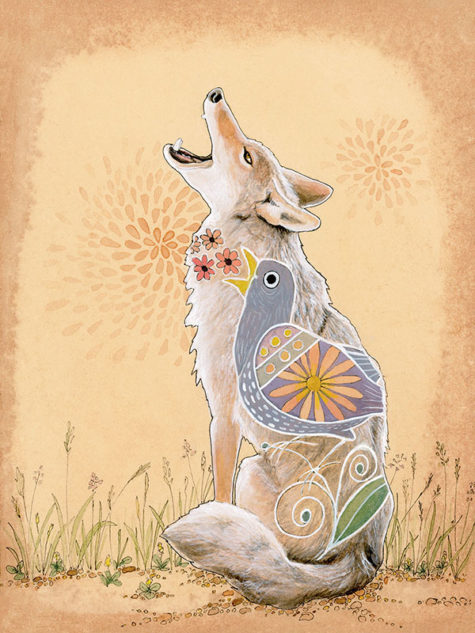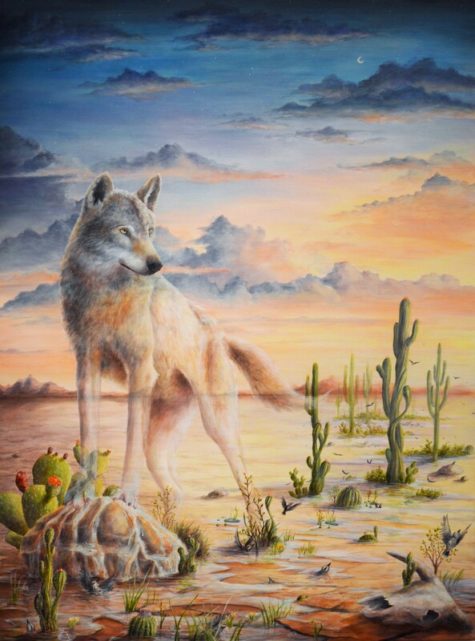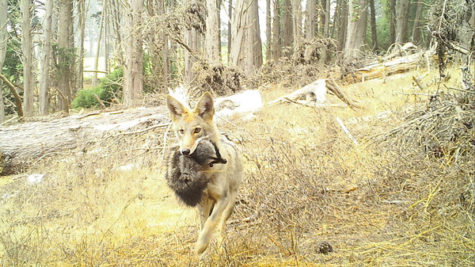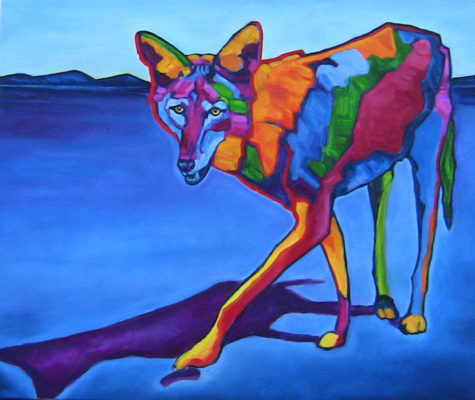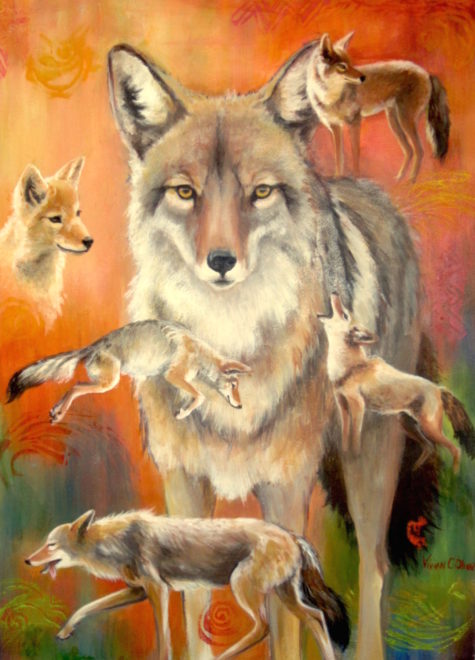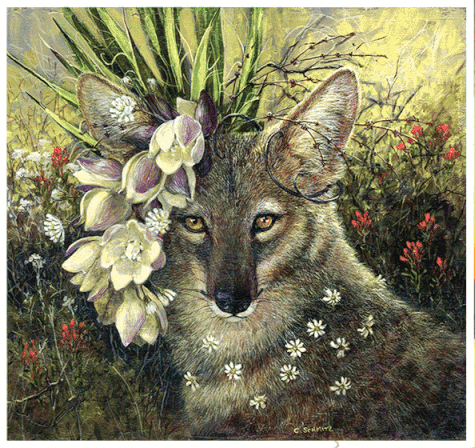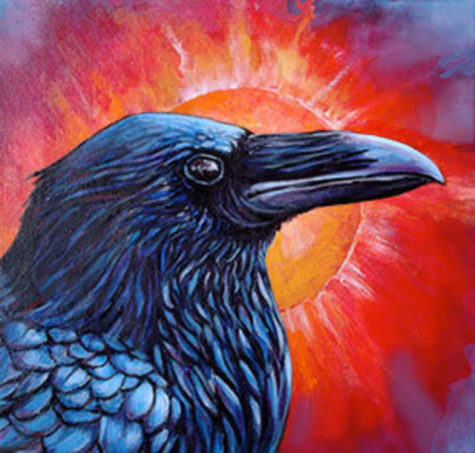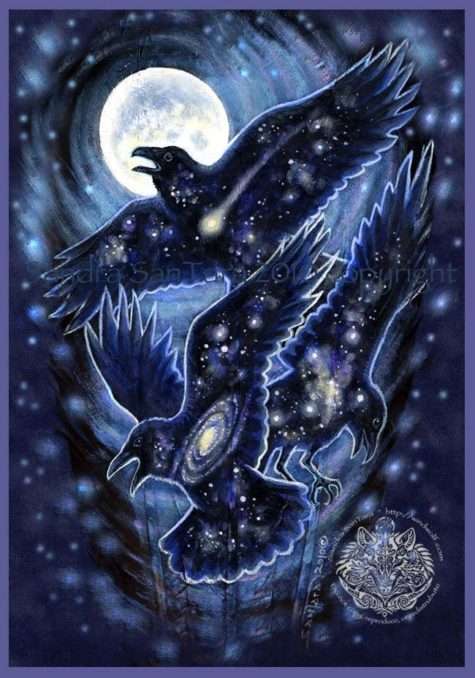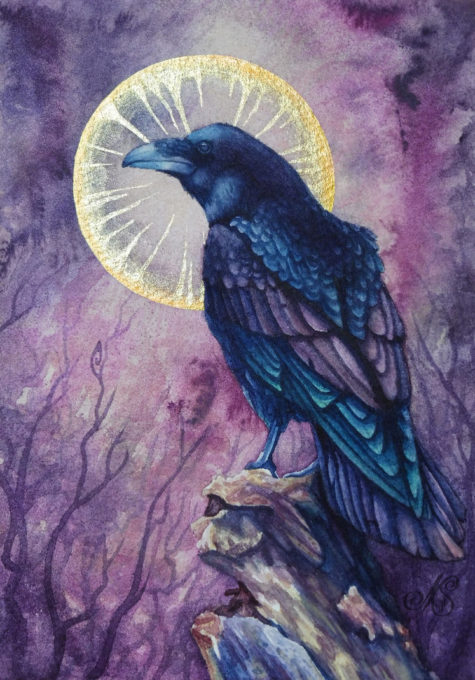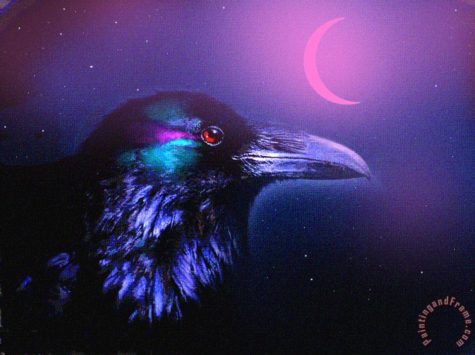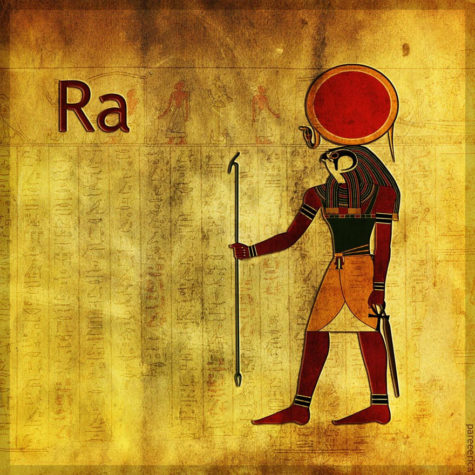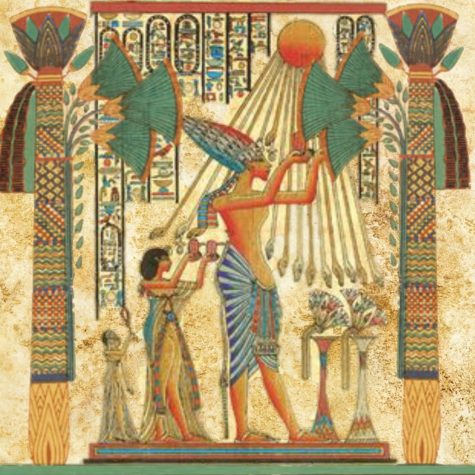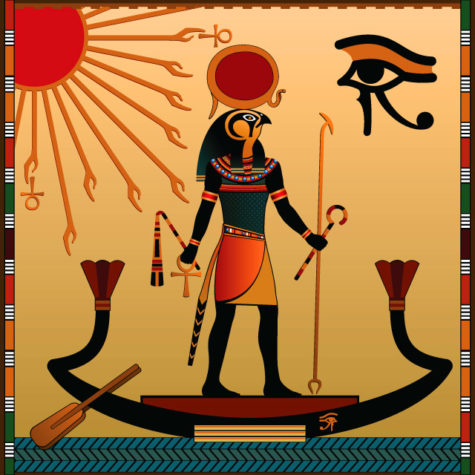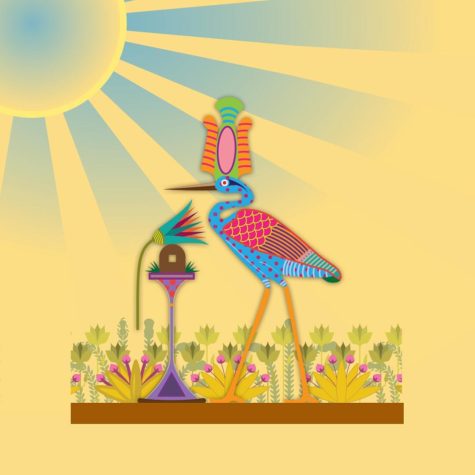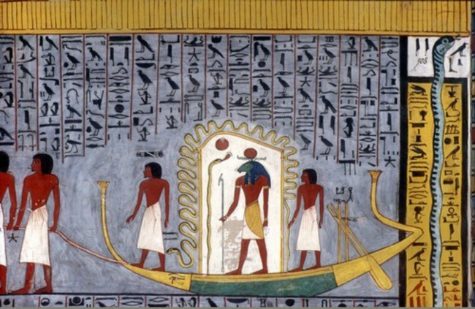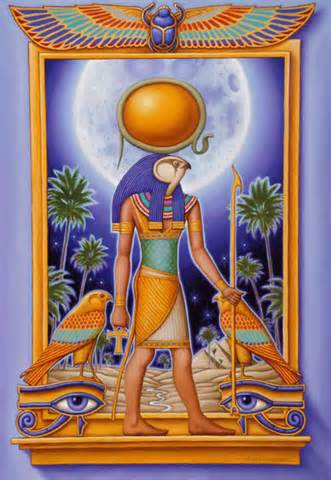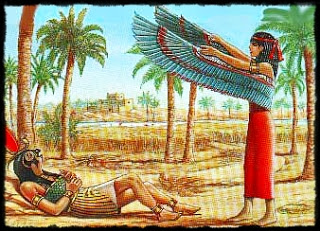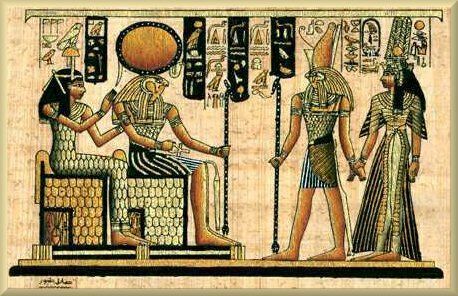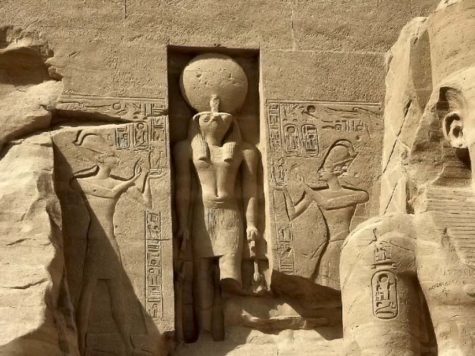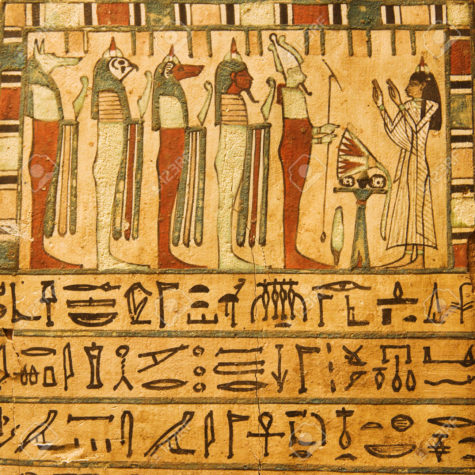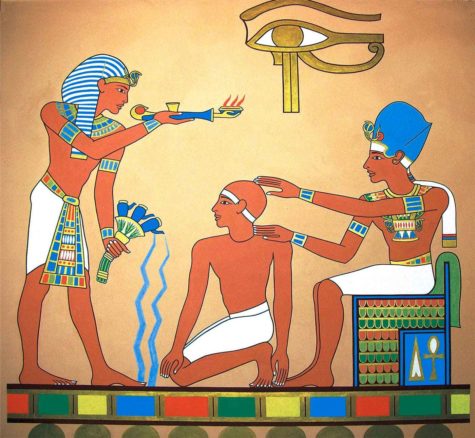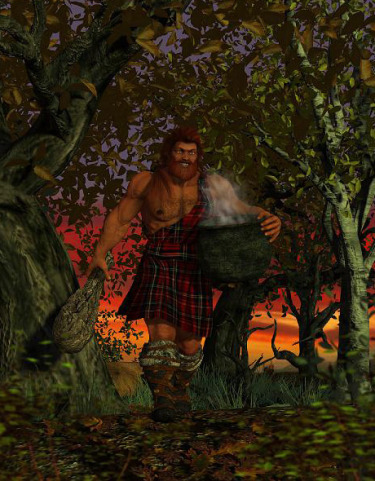Magick
The concept of the familiar has been a vital component of various cultures throughout man’s history. The Romans, for example, believed that each household was protected by a familiar whose job it was to keep the family from harm, and shamans and medicine men of various tribal traditions have long honored the spirits of animals for their wisdom and assistance in magickal workings.
Yet despite these positive influences, when we think of a familiar the most common image is that of the evil witch with her fearsome-looking black cat. This archetype, straight from the fairytales of our childhood, has its roots in the fear and superstition of the Dark Ages, and it bears no resemblance to the modern-day familiar.
Today’s witches view their familiars in an altogether different light. For the modern witch, a familiar can be any animal with which the individual feels an affinity. While these animals are not considered evil spirits, they’re far from being just a household pet and are treated as partners in the practice of magick.
Because animals are believed to be more sensitive to vibrations from the unseen world, they are useful to the witch as a kind of psychic sensor, indicating the presence of negative energy by their behavior. Familiars also bring added energy to magickal workings because of their close affinity with the spirit world and their attunement with their witch.
The finding of an animal familiar is a very personal thing, and often the witch will send out a psychic call to attract a suitable one. An immediate and overwhelming feeling of kinship between the witch and the animal usually signifies the discovery of the new familiar.
In some cases familiars are not confined to physical bodies. Although they play the same role as animal familiars, spirit familiars are more versatile in that they can move about more freely. The presence of these sprit familiars is often experienced as a voice, vision, or strong feeling of peace. If necessary, they can be associated with inanimate objects, such as a stone or piece of jewelry, to make contacting the spirit an easy task.
Creating A Familiar
This rite it designed specifically for cats, but may be employed with any animal you wish to make your familiar spirit.
Each night during the cycle of the waxing Moon, sit closely with the animal. Arrange it so that you are both facing toward the horizon where the Moon shall rise. Stroke the creature firmly, but with love, until he or she begins to purr or relax. Align your own breathing with the purr, or in the case of a creature other than feline friend, align your breathing with that of the animal.
Continue to do this each night at moonrise. When the Moon is at full, your will shall be as one with that of your familiar. You shall see through its eyes, and it will see through yours. Your thoughts shall be as one, and you will share a single heart.
Source: M. Williams
The Coyote is one of the sacred animals that can open the door to the other world and it acts as a messenger between this world and the next.
- Keynote: Wisdom and Folly
- Cycle of Power: Year-round
The coyote spirit animal makes its presence known when you feel like you have lost your way.
The Coyote shares many of the characteristics of the Fox. It is the trickster God, the miracle-worker, the shape-shifter, and as such plays an important part in Native American belief. Because Coyotes can be heard howling at night they are often associated with the Moon.
The Coyote is an amazingly adaptive animal, and the Native American lore about this animal is rich and plentiful. It is the creator and the jokester. Much magick has been associated with the Coyote, but the magick does not always work. Even in its not working, it serves a purpose. There is always hidden wisdom where the Coyote is concerned.
In many ways the Coyote is to the plains Indians what the raven is to the people of the Northwest ~ creator, teacher, and keeper of magick. Both are playful and love to have fun. Both are skillful, but often look for ways to do things that will not involve the use of their own skill. They often look for short cuts. Both remind us not to become too serious, and both remind us that anything is possible.
Oftentimes in many of the tales, the Coyote makes things more complicated than they need to be. If Coyote has shown up as a totem, you may wish to ask yourself some questions:
- Are you and those around you being too serious?
- Have you forgotten that play time is essential to health?
- Are you complicating what is really simple in some are of your life?
- Is someone playing tricks on you?
The Coyote teaches the balance of wisdom and folly and how they both go hand in hand. The image of the wise fool has been used in the lore of many societies. This is the individual who seems to be a simpleton and yet the words and actions have a much greater wisdom than is initially recognized. Are you not seeing the wisdom of your life and its events? The Coyote will help you.
If Coyote has appeared for you, it’s time to find the humor and laughter in the lessons of life so that you will continue to appreciate it for the exciting and unpredictable adventure that it is! When you learn to laugh at your mistakes and disappointments, there are only life lessons and experiences, and a whole lot of possibilities.
Call on your Coyote Spirit Animal when:
- You need to inject more humor into your life.
Life doesn’t have to be so serious and somber all the time. Laugh at yourself, and don’t let life get you down! - You want to gain more wisdom and understanding of how the world works.
Life is a big puzzle which you will eventually understand the more that you experience it. Do not be afraid of change because this will give you meaningful lessons. - You want to fully experience life!
Sometimes you need to throw caution to the wind and live each day as it comes. Be present in the moment because life is too short.
In the tarot deck is The Fool card. This card is good for anyone with a Coyote totem to meditate upon. Its energies are tied to simplicity and trust. It is the card for developing poise in the chaos of life. It stimulates and renews innocence, and it reawakens a childlike wisdom in response to the world. It is the card that reminds us that true teachers of wisdom have a wonderful sense of humor. Through the Coyote, we learn to become again as little children with a reawakening of the intellect, creativity, the artistic mind, and all of the intuitive faculties.
The Spirit Keeper of the South is represented by the Coyote, that wild and wily teacher of the animal kingdom. There is a whole body of Native mythology dealing with the Coyote, the old trickster who is sometimes Creator and sometimes sacred clown. The Coyote is the most sacred and most profane of animals. Like loon and frog, he is a powerful singer whose song can move humans to freedom or to fear. Coyote brings growth to everyone, but to those who love life he gives the gift of trust. It is trust in life that teaches true survival and real endurance.
When he serves as Shawnodese, The Spirit Keeper of the South, the Coyote’s coat is the mottled color of the sun at midday shining on the earth. Sometimes when serving with Shawnodese the Coyote’s coat is so mottled he seems to disappear. It is then he does his most powerful work.
Coyote can be found in many rural settings in North America. Smaller than a wolf, the Coyote has proven adaptable to the onslaught of civilization. Coyote’s most distinguishing attributes are his swiftness, sharp senses, doglike features, and song. On many evenings in the country, the yipping and howling of Coyote pierces the quiet night, reminding all the two-leggeds who can hear that although they now predominate on earth, they are not the only species in existence.
Of all the figures in Navajo life and mythology, Coyote (Maii’) is the most contradictory and delightful animal. Coyote is considered a god, a trickster, and an evil spirit. He cannot be killed because he is powerful and contradictory.The Coyote is important in traditional Navajo life. Coyote always seems to be hiding or lurking just out of view. He is a shadowy figure that can be funny or fearsome.
Although often seen as a pest to be eliminated by many groups, it has managed to extend its range. It is found in every part of the country. It has been able to do so because it has used its keen intelligence and adaptive ability. The Coyote used to be most active hunting at dawn and dusk. Today it is most active at night. This is done to avoid other hunters.
The Coyote will often use cooperative hunting techniques. They have a well organized system of running down smaller prey. The chase occurs in relays. While one Coyote rests, another gives chase. This kind of cooperation hints at the energies that Coyote can bring to your life ~ an ability to stimulate cooperation to accomplish important tasks in the most efficient manner. Sometimes the Coyote has even teamed up with badgers and they have hunted together, reflecting the Coyote’s ability to adapt to the situation.
The howl is one of the Coyote’s most significant qualities. It is generally accepted to be primarily a social gesture. It can express loneliness, warn of danger, or call for assistance. It touches the soul of whoever hears, reminding us of our primal connections.
A Coyote’s den can be located anywhere. They usually prefer the side of a hill near a water source. The Coyote will often return to the same den for each litter, but they rarely use the den year-round. It is a place they work out of. This same kind of pattern is common among those who have a Coyote as a totem. They are most effective when they work from a place, but do not limit themselves strictly to it. It hints of the need for mental stimulation, and those with this totem require a lot of it.
Coyote’s have a very close-knit family unit. They will sometimes mate for life. The father is very conscientious and participates in the care and raising of the young. Both parents train the young in hunting techniques. The male cares for the mate, while she is pregnant, helping to protect and feed her. If something does happen to the mother, then the male takes over the care of the young.
The Coyote is one of the most fascinating animals, and it is not easily locked into any particular category. It is filled with paradox, but at the heart of its energy is the balance of wisdom and folly that makes for a fulfilling life.
Coyote Superstition and Taboos
The Coyote is sometimes held responsible for all the evils of the world, and in the countries where it makes its home it is generally a symbol of bad luck.
How people react to Coyote teaches a lot about them. Those who love life and the earth are inspired by Coyote’s song and his ability to outsmart the civilization that has tried to destroy him. Those who fear all that is natural also fear Coyote and try to destroy him by shooting, poison, or traps. Fearful ones depict Coyote as a thief, one who eats domestic livestock, like chickens. Coyote prefers to eat natural, free-roaming animals like mice or rabbits but he will lunch on an occasional chicken or small domestic animal in areas where civilization has killed all of his natural prey.
Navajos have an omen that can also be considered as a taboo. They say that if Coyote crosses your path, turn back and do not continue your journey. If you keep traveling, something terrible will happen to you. You will be in an accident, hurt, or killed.
Coyote Symbolism
Coyote symbolism has a tendency to be rather powerful in what it is trying to tell you, and if the spirit animal does appear to you in your life, then it will often signify a number of rather important changes or differences that are going to occur.
However, there are a number of clear facts surrounding this particular spirit animal that you may like to be aware of just in case it does end up appearing in your life.
- It appears when you feel you have become lost.
There is nothing more disheartening for an individual than believing that they have become lost with the path that they are following in life.
If that sounds like you, then this may be the time where the coyote spirit animal will appear.
It offers you strength and knowledge that you will get through this period and find your direction once again as you have the ability in your own self to be able to achieve this.
- It is intended to inspire some change in you.
The meaning of the coyote inspires change. If you do the same things over and over, you will pretty much get the same results, and that’s truly no way to live your life!
There has to be a time where you realize that doing the same actions will always lead to the exact same outcome, so the coyote spirit animal is reminding you that this does not always have to be the case.
Instead, you can do something different and see the outcome and whether or not you prefer it to be this way.
The challenge for you by your coyote totem is to do things using new methods, options, and solutions. Out with the old, and in with the new!
Trying new things will help you learn new tricks to succeed in life and win at relationships. A whole world of choices and opportunities will open for you if you start letting go of your old fears and insecurities.
- Let go of sentimental things to get freedom.
When the coyote totem appears to you, it urges you to let go of sentimental attachments and focus on what you are going to do with what you have in the present. What it is trying to do here is to get you to focus on the present and what you have surrounding you right now as that is the most important thing of all.
The coyote meaning reminds you that life is always changing, and nothing ever stays the same. Even if you fight change with all that you have, you should learn to let go of the mental anguish and find a way to laugh it off and make it work.
This rather important idea is that the coyote spirit animal is encouraging you to release yourself from the bind of those items that are not allowing you to then grow as an individual.
- It pushes that there are hidden roads that you do not know of.
The coyote symbolism ushers in a time to find hidden paths that will lead you to where you should be. It’s time to reveal the truths behind the masks, and it’s time to see beyond the illusions.
The coyote is able to wander all over the place, and it finds new roads to travel down, so that is one message that is loud and clear with the coyote spirit animal.
However, it also teaches you that there is no need to be afraid to go down that hidden road even though you may not know what is at the other side as you have the ability to deal with whatever is placed in front of you.
- You may be slightly reckless.
Coyote symbolism is also tied into the idea of you being reckless at times simply because you see some kind of opportunity and you then look at going for it.
This will work in your favor at times, but then it can also work against you as well, so you need to try to weigh up your options as much as possible.
It’s time to do things that bring you joy, contentment, and happiness.
There is no doubt that the coyote spirit animal is a bit more of a free spirit than people are perhaps aware of, but it will also show you to focus on the present rather than being stuck in the past or wondering what the future will be like.
Dreaming About Coyote
The coyote is a complex dream symbol. On one hand, the coyote represents wisdom and being aware of the balance of Nature. It means surviving in all circumstances and maintaining a sense of humor. On the other hand, the coyote is a symbol of weakness, deception, hypocrisy, and meddling in things that aren’t your business.
If your dream includes being attacked by a pack of coyotes, or if several coyotes are threatening you, this is a warning that you need to be very careful and watchful in the near future. If you see a friendly coyote in the dream, it indicates that you are or will be deceived by someone close to you. Alternatively, the friendly coyote suggests that you will be able to get past any troubles that are keeping you from evolving psychologically.
The appearance of a coyote in a dream may symbolize a lack of ambition or a weakness of some kind. It may also indicate that you are attacking those around you who are weaker and can’t defend themselves as well.
Coyotes represent “tricky” and unexpected elements in life. For Native Americans, the coyote is a creator, teacher, and a keeper of magic. The coyote is the Trickster God who appears as the Creator in many creation myths. The coyote is considered to be a messenger who has the ability to change his appearance. The coyote generally represents a sacred power.
If you see a coyote in your dream, it is a reminder to keep your sense of humor and not become overly serious in life. The coyote suggest that you need to learn how to balance wisdom with folly, as represented in some cultures by the figure of the “wise fool.” Coyotes in nature are very cooperative with one another, so the dream coyote may be telling you to be more cooperative with others and that you can accomplish great things through cooperation.
Sources:
- Animal Speak
- Sleep Culture
- Dancing With The Wheel
- Trusted Psychic Mediums
- The Element Encyclopedia of Secret Signs and Symbols
The winter solstice and winter season is the time of greatest power for those with the raven as a totem. The solstice is the shortest day of the year The sun shines the least on this day, thus it is the darkest. From that day forth, the light shines a little more each day This is symbolic of the influence of raven. It teaches how to go into the dark and bring forth the light. With each trip in, we develop the ability to bring more light out. This is creation.
CHANT
Wing so black it shines like Moon at midnight,
O Raven, strong, hear my cry!
Teach me old magick, powerful, bold,
O Raven, eloquent and wise.
The Raven’s keynote is that of magic, shapeshifting, and creation. While its cycle of power is that of winter solstice. The raven is one of those birds that has a tremendous amount of lore and mythology surrounding it, and it is often contradictory. It is a bird of birth and death, and it is a bird of mysticism and magic.
In the near East, the raven was considered unclean because it is a scavenger. It is one of the foods listed as forbidden in the Bible. The raven is one of the birds that Noah sent out after the floods, but it did not return to the ark. On the other hand, also in Biblical lore is the tale of how a raven fed the prophet Elijah when hiding from King Ahab.
In Scandinavian lore, the raven played a significant role. The Norse god Odin had a pair of ravens who were his messengers. Their names were Hugin (thought)and Munin (memory). Odin was known to shapeshift as a raven himself. This reflects the idea of raven being a messenger of the great spiritual realm.
In the Middle Ages the croak of the raven was believed to foretell a death or the outcome of a battle. It was even taught to the common folk in Christian communities that wicked priests became ravens when they died. Even today, some old timers tell how you can expect hot weather when a raven is seen facing a clouded sun.
The raven is a member of the corvids family, to which belong crows and magpies and other such birds. In truth, the only really significant difference between the crow and the raven is in size, the raven being much larger. It would be beneficial to study the information on the crow for anyone who has a raven as a totem. Much of the same information that applies to one, also applies to the other. It is simply a matter of degree. Rather than repeat that information here, I would like to give you some information not generally associated with the crow itself.
The raven has a wealth of myth and lore surrounding it. In many ways it is comparable to the coyote tales of the plains Indians, the Bushmen tales of the mantis and other societies in which an animal plays both a significant and yet confusing role. The coyote was both trickster and wise being-fool and wise one. This was true of the mantis in the tales of the Kalahari Bushmen.
In the Pacific Northwest the raven has this same aura about him. In the Pacific Northwest, raven brought forth life and order Raven stole the sunlight from one who would keep the world in darkness. Nothing could exist without raven. Raven is honored in art and on totem poles, reflecting the tales and mysticism that have developed around it.
With raven, human and animal spirits intermingle and become as one. This is reflected in its deep, rich shiny black. In blackness, everything mingles until drawn forth, out into the light. Because of this, raven can help you shapeshift your life or your being. Raven has the knowledge of how to become other animals and how to speak their languages.
Ravens are great at vocalizations, and they can be taught to speak. They incorporate and mimic the calls of other species. In the Northwest are tales of the Kwakiutl Indians who offered the afterbirth of male newborns to Raven so that when they grew up, they would understand their cries. Raven can teach you to understand the language of animals.
Ravens are playful, and they are excellent tool users. They will use stones and anything else that is available to help them crack nuts and such. They are birds not intimidated by others, and they are very fast and wary Because of this, they are not easy prey for other animals or birds. This implies the ability to teach you how to stir the magic of life without fear They are also known for their amorous behavior, reflecting the strong creative life force to which they have access.
This creative life force can be used to work the magic of spiritual laws upon the physical plane. It can be used to go into the void and stir the energies to manifest that which you most need. All this and more is what raven teaches. If raven has come into your life, expect magic. Somewhere in your life, magic is at play Raven activates the energy of magic, linking it with your will and intention.
Raven speaks of the opportunity to become the magician and/or enchantress of your life. Each of us has a magician within, and it is Raven which can show us how to bring that part of us out of the dark into the light. Raven speaks of messages from the spirit realm that can shapeshift your life dramatically Raven teaches how to take that which is unformed and give it the form you desire.
~Ted Andrews – Animal Speak
Ra (pronounced as Rah, and sometimes as Ray) is an ancient Egyptian sun god. By the fifth dynasty he became a major deity in ancient Egyptian religion, identified primarily with the mid-day sun, with other deities representing other positions of the sun. Ra changed greatly over time and in one form or another, much later he was said to represent the sun at all times of the day.
Also known as:
- Re
- Phra
- Amun-Ra
- Akmun-Ra
Ra should be pronounced as ‘rei’; hence the alternative spelling Re rather than Ra. The meaning of Ra’s name is uncertain, but it is thought if not a word for ‘sun’ it may be a variant of or linked to ‘creative’. As his cult arose in the Egyptian pantheon, Ra often replaced Atum as the father, grandfather, and great-grandfather of the deities of the Ennead, and became a creator of the world.
Ra was an incredibly powerful and important central god of the Egyptian pantheon. His believers considered him to be the god who created everything. He was worshiped more than any other god by the ancient Egyptians.
Ra represents sunlight, warmth and growth. It was only natural that the ancient Egyptians would believe him to be the creator of the world, as well as part of him being represented in every other god. The ancient Egyptians believed that every god should illustrate some aspect of him, while Ra himself should also represent every god.
Ra created himself from the primordial chaos. He is also known as Re and Atum. His children are Shu, the God of Dry Air and Father of the Sky, and his twin sister Tefnut, the Goddess of Moisture and Wetness. Humans were created from Ra’s tears.
Invoked For:
He is the source of all light and life, destroyer of darkness, night, wickedness, evil. Creator of Heaven, Earth, and the Underworld. Eternal god without end. God of all agriculture, the Sun, magick, prosperity, spells, rituals, destiny, right, and truth.
Sun Ra Invocation:
As the sun pierces your consciousness and you struggle through those dog days of summer, it becomes easy to understand the ancient Egyptian respect for the Sun God. Pay tribute to Ra for his blessings in the way he likes best. In ancient Egypt, myrrh was burned at high noon to please him.
Put a few small chunks of myrrh on a white charcoal block placed on a fireproof surface outdoors. Use your hands to gently brush the smoke upward toward the heavens as you chant:
In honor and praise I send this smoke toward you
Thanks for the blessings and the sunny days, too
Sun Ra, great god, emblem of the sun
I honor and praise you for all that you’ve done.
Titles and Epithets:
- The Creator
- The Supreme Power
- The Only One
- Great Father
- Father of the Gods
- Sun God.
- Lord of the Circles
The ancient Egyptians revered Ra as the god who created everything. Also known as the Sun God, Ra was a powerful deity and a central god of the Egyptian pantheon. The ancient Egyptians worshiped Ra more than any other god and pharaohs often connected themselves with Ra in their efforts to be seen as the earthly embodiment of the Sun God.
Ra is the head of the Great Ennead (the nine deities of Atum, Geb, Isis, Nut, Osiris, Nephthys, Seth, Shu, and Tefnut), supreme judge; often linked with other gods aspiring to universality, and king of the gods until Osiris took over his throne. Ra was often lauded as “Lord of the Circles” and as “he who entereth (or liveth) in the circle.” He was described as “the sender forth of light into his circle” and as the “Governor of (his) circle.”
Symbolism
For the Egyptians, the sun represented light, warmth, and growth. This made sun deities very important to Egyptians, and it is no coincidence that the sun came to be the ruler of all. In his myths, the sun was either seen as the body or Eye of Ra.
In artwork Ra primarily is depicted as a man wearing a pharaoh’s crown (a sign of his leadership of the deities) and the sun disk, or Wadjet sun disk above his head.
- The Sun Disk
The sun disk that surrounded his head symbolizes what the god represents, including sunlight, warmth and growth. As he was the god of creation, the sun disk represents the light and energy needed for life.
The Wadjet sun disk, is a sun disk with a cobra wrapped around it. Called the Wadjet sun disk because the goddess Wadjet, was depicted as an Egyptian cobra, an animal thought only to be female and reproducing through parthenogenesis. It is also shown as the hieroglyphic Ankh, symbolizing the life given by the sun.
Some traditions relate that the first Wadjet was created by the goddess Isis who formed it from the dust of the earth and the spittle of Atum. The uraeus was the instrument with which Isis gained the throne of Egypt for her husband Osiris. As the sun, Ra was thought to see everything.
- Eye of Ra
Present in the ancient Egyptian mythology is the Eye of Ra, shown as the sun disk with two ‘uraeus’ cobras coiled around it, next to the white and red crowns of Upper and Lower Egypt. Initially associated with Horus (similarly to the Wadjet, the Eye of Horus), the Eye of Ra shifted positions in the myths, becoming both an extension of Ra’s power and a separate entity altogether.
- The Falcon
He was associated with the falcon, the symbol of other sun deities who protected the pharaohs in later myths.
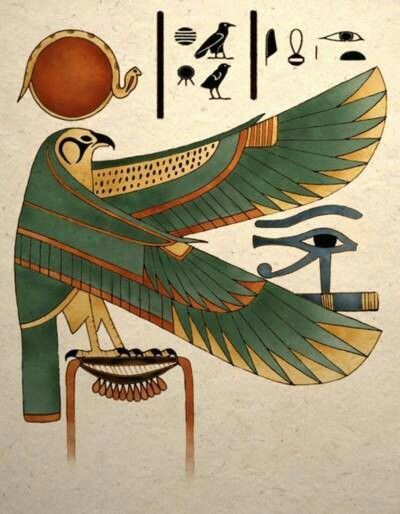
Ra shared many of his symbols with other solar deities, in particular Horus, usually depicted as a falcon. After the deities were paired with pharaohs, the children of Hathor were considered to be fathered by Ra.
- The Tree of Life
The Tree of Life is an important religious symbol to the Egyptians. The Tree of Life was located within Ra’s sun temple in Heliopolis and was considered sacred. The fruit that sprang from this tree was not available to humans, but only in aging-rituals reserved for pharaohs. The Tree of Life is also referred to as the mythical, sacred Ished tree. Eternal life came to those who ate the fruit from the Tree of Life.
- Bennu Bird or Phoenix
Another important ancient Egyptian symbol connected to Ra is the “Bennu.” The Bennu bird is Ra’s ba and a symbol of fire and rebirth. Bennu is the name of the bird that represented Ra’s soul.
This bird is a phoenix and it was seated at the Tree of Life in Ra’s Sun Temple in Heliopolis. Inside the temple, on top of an obelisk, sat the Benben Stone. This pyramid-shaped stone served as a beacon to Bennu and is also an important ancient Egyptian religious symbol. Sometimes, Ra is depicted as a phoenix, showing the connection between the two.
- Primordial Serpent and Sun Boat
Ra was thought to travel in a sun boat to protect its fires from the primordial waters of the underworld it passed through during the night.
The ancient Egyptians believed that as the sun god, Ra’s role was to sail across the heavens during the day in his boat called the “Barque of Millions of Years.” In the morning when Ra emerged from the east, his boat was named, “Madjet” which meant “becoming strong.” By the end of the day the boat was called, “Semektet” which meant “becoming weak.” At the end of the day, it was believed that Ra died (swallowed by Nut) and sailed on to the underworld, leaving the moon in his place to light up the world.
The ancient texts describe how Ra would go down with the setting sun into the underworld and then rise again the next day on the opposite side. This also symbolizes the same journey that the deceased would take right after burial.
The journey was divided into 12 hours, with each hour representing an obstacle that Ra had to complete in order to move onto the next. Each area has gods and monsters that Ra meets along the way.
Throughout his journeys and adventures, the serpent-god Apep is his greatest enemy. Apep would hide below the horizon waiting to attack Ra, and they would fight many battles. Many gods and goddesses were involved in defending Ra, including the god Seth.
Ra was reborn at dawn the very next day. Ra traveled in the sun boat with various other deities including Set and Mehen who defended against the monsters of the underworld, and Ma’at who guided the boat’s course. The monsters included Apep, an enormous serpent, or also, The Lord of Chaos, who tried to stop the sun boat’s journey every night by consuming it. In some stories, Ra, in the form of a cat named Mau, defeats the evil serpent, Apep. This is part of the reason why cats are so highly-revered in Egypt.
The Ra myth saw the sunrise as the rebirth of the sun by the goddess Nut and the sky, thus attributing the concept of rebirth and renewal to Ra and strengthening his role as a creator god.
In the Pyramid Text, Re is perpetually resurrected in the mornings in the form of a scarab beetle, Khepri, which means the Emerging One. He rides on the primordial waters, called Nun, in his sacred bark (boat) along with a number of other deities across the sky. At noon he is the falcon-headed man Harakhty, and at sunset the elder Atum, the “All Lord.” He is then swallowed by the goddess Nut, who gives birth to him each morning again as Khepri.
Therefore, the cycle continued with birth, life and death. This constant aging was suggested by some later Egyptians as the reason Ra stayed separate from the world and let Osiris or Horus rule in his place.
Often coupled with this idea is the myth in which Isis is able to trick an elderly Ra, having ruled on earth as a human pharaoh, into revealing his secret name, and thus the secret of his power. Ra subsequently lost his power, resulting in the cult of Isis and Osiris to rise in importance.
- Other Symbols
The Obelisk represents the rays of the sun and was worshiped as a home of a solar god. Other symbols include Pyramids aligned east to west, the Bull, Serpent, Heron, Lion, Cat, Ram, Hawk, Beetle, and others. His main symbol, however, is the sun disk.
Ra’s Appearance
Ra is usually shown in his human form with a falcon head crowned with a sun disc. The famous sun disc was surrounded by a sacred cobra named Uraeus. In some artistic representations of the god, he is shown as “a man with the head of a beetle” or sometimes as “a man with the head of a ram”.
Sometimes Ra is shown in animal form; most commonly, Ra is shown as a hawk, but sometimes also a beetle, lion, ram, or snake, as all of these were considered powerful animals in ancient Egypt. In iconography, Egyptians sometimes painted Ra as simply a large solar disk between two large falcon wings. Ra was incorporated into many aspects of Egyptian art, and he can be seen in paintings, sculptures, statues, and even jewelry.
Composites
As with most widely worshiped Egyptian deities, Ra’s identity was often confused with others as different regional religions were merged in an attempt to unite the country.
- Amun Re
Amun was a member of the Ogdoad, representing creation energies with Amaunet, a very early patron of Thebes. He was believed to create via breath, and thus was identified with the wind rather than the sun. As the cults of Amun and Ra became increasingly popular in Upper and Lower Egypt respectively they were combined to create Amun-Ra, a solar creator god. The name Amun-Ra is reconstructed).
It is hard to distinguish exactly when this combination happened, but references to Amun-Ra appeared in pyramid texts as early as the fifth dynasty. The most common belief is that Amun-Ra was invented as a new state deity by the (Theban) rulers of the New Kingdom to unite worshipers of Amun with the older cult of Ra around the eighteenth dynasty.
- Atum-Ra
Atum-Ra (or Ra-Atum) was another composite deity formed from two completely separate deities, however Ra shared more similarities with Atum than with Amun. Atum was more closely linked with the sun, and was also a creator god of the Ennead. Both Ra and Atum were regarded as the father of the deities and pharaohs, and were widely worshiped. In older myths, Atum was the creator of Tefnut and Shu, and he was born from ocean Nun.
- Ra-Horakhty
In later Egyptian mythology, Ra-Horakhty was more of a title or manifestation than a composite deity. It translates as “Ra (who is) Horus of the Horizons”. It was intended to link Horakhty (as a sunrise-oriented aspect of Horus) to Ra. It has been suggested that Ra-Horakhty simply refers to the sun’s journey from horizon to horizon as Ra, or that it means to show Ra as a symbolic deity of hope and rebirth.
- Khepri and Khnum
Khepri was a scarab beetle who rolled up the sun in the mornings, and was sometimes seen as the morning manifestation of Ra. Similarly, the ram-headed god Khnum was also seen as the evening manifestation of Ra. The idea of different deities (or different aspects of Ra) ruling over different times of the day was fairly common, but variable.
With Khepri and Khnum taking precedence over sunrise and sunset, Ra often was the representation of midday when the sun reached its peak at noon. Sometimes different aspects of Horus were used instead of Ra’s aspects. In Thelema’s Liber Resh vel Helios, Ra represents the rising sun, with Hathor as the midday sun and Tum as the setting sun.
- Ptah
Ra rarely was combined with Ptah; the sun “crosses” over Ptah in the underworld before Ptah is reborn, thus there would be no sun-ray when this happens. Other combinations can and do exist: The rising sun with sun ray, the noon sun with sun ray, and sitting sun with sunray. But as per the Memphite creation myth he was often said to be Ptah’s first creation, through his divine will, especially when associated with Atum or Amun.
The Legend of Ra Isis and The Snake
Although Ra was highly revered and devoutly worshiped by the ancient Egyptians, there is a story to suggest he eventually grew weak. In the Legend of Ra, Isis and the Snake, the goddess Isis knew that Ra had a secret name. This secret name possessed immense power and would allow her to perform magic spells whenever she desired to.
She knew that Ra wouldn’t willingly tell her the name so she quickly got to work. Ra had begun to age and sometimes saliva dribbled from his mouth. Isis visited with him one day. She collected the spit that dribbled down his chin and mixed it with dirt and clay. She shaped her mixture into a poisonous snake.
She set the snake in Ra’s path, and when Ra was out for a walk, the snake bit him and he immediately felt the poison rushing through his body. He was in tremendous pain and asked the other gods to help him. Isis promised to help Ra but only if he would tell her his secret name. He was resistant at first, but eventually, because of the pain he was in, Ra allowed Isis to “search through him” and in so doing, she healed him and Ra’s power was transferred over to her.
The Birth of Humans
One myth tells us that Ra first came to power during the golden age. Everything was perfect and just as it should be. The earth had not been tainted in any way. The sight of such perfection moved Ra to tears and they fell to the earth. The tears grew into humans.
At first, Ra was infatuated with watching humans interact and grow. But then he became angered with them as they ended the golden age that he had loved so much. They were cruel to each other and were ruining the earth.
He summoned the goddess Hathor and transformed her into a savage lioness. He then sent her to earth to kill every human. Hathor attacked every human she came across, killing most. But before she could eliminate all humans, Ra had a change of heart. He decided he needed to stop Hathor and did so by giving her enough beer to intoxicate her. She forgot her mission but the damage she had caused was permanent. Humans had been introduced to death and now all faced their immortality.
Quick Facts About Ra
- The ancient Egyptians worshiped Ra to such an extent above other gods that some historians have argued that ancient Egyptian religion was indeed a monotheistic one with Ra as the singular god.
- Historians believe that the pyramids might represent rays of sunlight, further connecting the pharaohs with Ra, the sun god.
- During Ra’s journey through the heavens he was accompanied by several other gods including Thoth, Horus, Hathor, Maat, Abtu, and Anet.
- Nut, goddess of the sky and heavens, is sometimes referred to as Ra’s mother, because he emerges from her and is reborn every morning.
- The morning manifestation of Ra is known as “Khepri the scarab God.”
- The evening manifestation of Ra is known as the ram-headed god, Khnum.
- The sacred cobra that encircled Ra’s crown symbolized royalty, sovereignty and divine authority.
- The right eye of Ra represented the Sun; while the left eye of Ra represented the moon.
- Ra is also closely associated with the Tree of Life myth, the Ben-Ben Stone and the Bennu Bird myths.
- Ra’s glory came to an end during the time when the Roman’s conquered Egypt in 30BC.
The Creation of Ra
Ra did not have parents. He is considered to be self-created and there are many myths that suggest how this came to be. It is said that before there was any land or recognizable landscapes, there was a body of water called Nun. The water was powerful and a shining egg arose from the darkness. Inside this egg was Ra. Sun rays landed on his body and gave him the power of sunlight. He then created all other elements of life by speaking their secret names. He spent his days traveling across the sky on a boat, where he carried prayers and blessings for the living.
At night, he would travel to the Underworld where Set and Mehen would help him defeat demons and monsters. He would leave the moon in the sky while traveling to the Underworld so that the living would still have light. It is said that he was reborn each day as the sun would rise over the horizon.
The Family of Ra
Ra had several siblings, including Apep, Thoth, Sobek and Serket.
Early in his myths Ra was said to be married to Hathor and they were the parents of Horus. Later his myths changed Hathor into Ra’s daughter. This featured prominently in the myth often called The Story of Sekhmet, in which Ra sent Hathor down to punish humanity as Sekhmet.
The Middle Kingdom saw Ra being increasingly combined and affiliated with other deities, especially Amun and Osiris.
Together with Atum, Ra was believed to have fathered Shu and Tefnut who in turn bore Geb and Nut. These in turn were the parents of Osiris, Isis, Set (also known as Seth), and Nephthys. All nine made up the Heliopolitan Ennead.
Worship of the Sun God
The New Kingdom brought new heights of worship to Ra. Many tombs in the Valley of the Kings portray depictions of Ra and his journey through the underworld. During this time, many solar temples were built.
Solar temples were built for Ra but did not contain a statue of the god. Instead, they were created to be open to the sunlight that Ra represented. The earliest known temple built in honor of Ra exists in Heliopolis meaning “City of the Sun” (now a Cairo suburb). This solar temple is known as “Benu-Phoenix” and is believed to have been erected in the exact spot where Ra emerged into creation.
In later Egyptian dynastic times, Ra was merged with the god Horus, as Re-Horakhty (and many variant spellings). When his worship reached this position of importance in the Egyptian pantheon, he was believed to command the sky, the earth, and the underworld.
His local cult began to grow from roughly the second dynasty, establishing Ra as a sun deity. By the fourth dynasty the pharaohs were seen to be Ra’s manifestations on earth. Fifth Dynasty and subsequent pharaohs were all known as “The son of Ra” and Ra became incorporated into every pharaoh’s name from then onward. His worship increased massively in the fifth dynasty, when he became a state deity and pharaohs had specially aligned pyramids, obelisks, and solar temples built in his honor.
During the Middle Kingdom, the new deity, Amun-Ra was formed. Amun was one of the gods who formed the Ogdoad (the assembly of eight gods who represented eight elements of creation).
It appears almost certain, that the Great Ennead – the nine deities of Atum, Geb, Isis, Nut, Osiris, Nephthys, Seth, Shu, and Tefnut – first appeared during the decline of Ra’s cult in the sixth dynasty, and that after introduction of the new pesedjet the cult of Ra soon saw a great resurgence until the worship of Horus gained prominence.
As the king and leader of Egypt, the pharaoh was seen as the human manifestation of Horus, so the two gods became connected. This new deity fusion was then referred to as “Ra-Horakhty” meaning Ra is Horus of the Horizon. Ra’s relationship with other gods did not stop there. As the powerful creator of mankind and the sun god, he also became associated with Atum to make “Atum-Ra.”
Afterward worship focused on the syncretistic solar deity Ra-harakhty (Ra, who is Horus of the Two Horizons). During the Amarna Period of the eighteenth dynasty, Akhenaten introduced worship of another solar deity Aten. The deified solar disc represented his preferred regional deity as he attempted to lessen the influence of the temple of Atum. He built the Wetjes Aten (Elevating the Sun-disca) temple in Annu. Blocks from this temple later were used to build walls to the medieval city of Cairo and are included in some of the city gates. The cult of the Mnevis bull, an embodiment of Ra, had its centre here and established a formal burial ground for the sacrificed bulls north of the city.
In the later myths Ra was seen to have created Sekhmet, the early lioness war goddess who becomes Hathor, the cow goddess after she has sufficiently punished mankind as an avenging Eye of Ra.
This changes the themes of much earlier myths into aspects of his and he is often said to be the father of both, and brother, to the god Osiris. Afterward nearly all forms of life supposedly were created only by Ra, who called each of them into existence by speaking their secret names and eventually humans were created from Ra’s tears and sweat, hence the Egyptians call themselves the “Cattle of Ra.”
Although not the contemporary view, E. A. Wallis Budge (1857-1934) claims that Ra was the one god of Egyptian monotheism, of which all other deities were aspects, manifestations, phases, or forms.
During the New Kingdom, the worship of Ra became more complicated and grand. The walls of tombs were dedicated to extremely detailed texts that told of Ra’s journey through the underworld. Ra was said to carry the prayers and blessings of the living with the souls of the dead on the sun boat.
The idea that Ra aged with the sun became more popular with the rise of The New Kingdom. Eventually, during the reign of Akhenaten (mid 1350s-1330s), the worship reached the level of “uncompromising monotheism”
Many acts of worship included hymns, prayers, and spells to help Ra and the sun boat overcome Apep. Though worship of Ra was widespread, his cult center was in Heliopolis in Lower Egypt. Oddly enough, this was the home of the Ennead that was believed to be headed by Atum, with whom he was merged. The Holiday of ‘The Receiving of Ra’ was celebrated on May 26 in the Gregorian calendar.
Though Ra lived on in various forms into the Greco-Roman period, his worship gradually deteriorated during the fist millennium. This decline was probably due to the weakening of the kingship under various foreign rulers. Though he continued to be a part of Egyptian theology, he was no longer a part of the peoples living faith. Devotion to Ra became more and more limited to priests of the temple.
The rise of Christianity in the Roman empire caused an end to worship of Ra by the citizens of Egypt, and as Ra’s the popularity suddenly died out, the study of Ra became purely for academic knowledge even among the Egyptian priests.
Sources:
Egyptian deities did not require human sacrifice or annihilation of people with their religious beliefs. Temples were not considered a place of communal worship. They were looked upon as houses for the deities; there, statues were kept and attended by priests and priestesses. The priesthood was not celibate. The pharaoh was considered an incarnated god upon Earth.
The life of the average Egyptian was a blend of religion and the use of magick. Magick was a vital part of every day life. The people believed that worship was basically a private, personal concern and duty. After all, the ancient Egyptians said, when you stood in the Hall of Judgment after death, no one could tamper with the scales that weighed your heart for truth and goodness. Your soul was laid bare; everything was revealed.
Individual worship was performed at home altars and certain shrines, with the populace as a whole participating in in the great seasonal festivals. The common people were not admitted to the great temples, but they made pilgrimages to certain shrines.
Since worship was considered a private concern, the ordinary person visited the temple of his choice for healing or to present petitions when he needed something. Even then, he entered only the outer courts of the temples. The inner sanctuary of the deity was entered only by the highest priests, priestesses, or the pharaoh.
Originally, the priests and priestesses did not believe in polytheism or animal worship. They believed that the god-forms each represented a principle or aspect of the Supreme Creator. They believed that as long as the spiritual needs of humans were met, it did not matter how the Ultimate Spirit was pictured. These priests / priestesses used a sacred language known only to them for all rituals and worship, probably the remnant of a very ancient language.
Some temples were centers of healing, “sleep houses,” where dream therapy and hypnosis were used to cure the sick. In these places, quiet music of special sounds and rhythms were employed for healing the whole person – body, emotions, mind, and spirit.
Egyptian worship was intertwined with music and dancing. The Singers could be either male or female, depending upon the deity they served. The Temple Dancers were most often female, spending their early years actively participating in the sacred dances, and their later years instructing the new Dancers.
Dancing and chanting made it necessary to have musicians. These were attached to the temples, as were the Dancers and Singers, and were usually female. Sometimes there were dramatic performances for very special religious rites.
The ancient Egyptians were well aware that humans had more than just a physical body. They said that humankind had seven souls. Much of the esoteric meaning of these forms has been lost. What we now know of these “souls” is limited.
Here is a simplified explanation of the seven souls:
- Khat – the physical body
- Ka – the body – soul. It came into existence when the body was born, lived in the body, but was distinct from it. I could assume any form, travel wherever it pleased in the realms of the gods. Did not die at the death of the body but continued to live in the tomb of the deceased.
- Ab – the heart. Seat of the life-force and home of the emotions and passions. Formed from the mother’s heart blood.
- Khu or Aakhu – the spirit-soul. Resided in the blood as a primordial life force. It was eternal and could not be injured or killed.
- Kkaibit – shadow. If the shadow was lost or stolen while the person was alive, it was believed that the physical body would exist in a diseased or dying state. To steal someone’s shadow was to steal their magickal power and their life and was considered a crime.
- Sah or Sahu – spiritual body. the eternal dwelling place of the soul. The khu lived within it.
- Sekkem – power. We might call it willpower or purpose. It animated the sah.
The soul name, ren, was believed to be a vital part of every person. It as given to each person at birth by the goddess Renenet. The Egyptians believed that only by knowing the correct soul name of a person, animal, or object could you have power over it.
Egyptian magick was primarily of two kinds:
- Magick to benefit the living or the dead
- Magick used to harm people
At the beginning of each ritual, four lighted lamps were set at the four quarters or directions. They represented the four sons of Horus. Symbols were also set at these quarters. At the east was placed a tat (pole or pillar) and in the south a model of a palm tree. At the west was set a figure of Anubis, in the north a figure of a mummy, sometimes lying in a coffin.
The power of any spell, incantation, or any word of power was considered greatly increased by the use of magickal pictures and amulets. The ankh was a favorite symbol, along with the tat of Osiris (also called a tet or djed), the solar disk, the scarab, the lotus, the buckle of Isis, and the Eye of Horus.
Wax images were used in certain rituals, primarily for gaining someone’s love or harassing enemies. The name of the individual was cut or written on the image. After spells were recited over the figure, it was stabbed, destroyed, of (for love) carried next to the heart. The priests of Amen-Ra at Thebes regularly burned a wax image of the evil god Apep. These wax serpent forms were subjected to all kinds of abuse before they were destroyed in a fire.
Gods of the Four Elements:
- Air (east): Tuamutef – with a jackal head
- Fire (south): Akeset – with a human head
- Water (west): Qebhsennuf – with a hawk head
- Earth (north): Mestha – with an ape head
Gods of the Four Directions:
- East: Bast, Min, Osiris, Ra
- South: Nekhebet, Sekhmet
- West: Ament, Hathor, Neith, Anubis, Temu, Sebek, Nephthys
- North: Buto, Shu, Mehueret, Isis
Source: Magick of the Gods and Goddesses
Dagda is the most prominent God of Celtic Mythology, leader of the Tuatha De Danann (Irish race of Gods of Mythology). He is identified with the Weish Gwydon and the Gallic Sucellos.
His titles and attributes:
- Mighty Red One
- Groat Knwdelle
- Ruler over Life and Death
- God of Time and Protector of Crops
- The Good God and Ollathir (All Father)
- God of Earth and Treaties
- Master of Magic
- Fearsome Warrior
Chief of the Tuatha Dé Daan, oldest of the Celtic deities, Dagda literally means “the good god.” What was his real name? That information may be reserved for initiates or he may be so old, no one knows any longer.
The Dagda is a spirit of magic and abundance. He is the tribal All Father, deity of the Druids, Lord of Regeneration, provider of plenty, Captain of Abundance. He is the Lord of New Grange. His children, Brigid and Angus Mac Og, are among the most powerful and beloved Irish deities. He plays the role of ideal father for his devotees.
The Dagda’s barrow (sidhe) features an inexhaustible supply of drink, three trees that always bear fruit, and a pig that is always alive, even though it’s slaughtered and consumed daily. He may be the prototype of the Grail King. The Romans identified him with Hercules.
The Dagda is the master of paradox. Incredibly wise and powerful, he’s uncouth and bumbling too. He’s an old, bald, fat, sloppy guy, but he’s a sex master too, a fertility spirit renowned for virility and sexual prowess. The Dagda engages in the Great Rite with great goddesses like the Morrigan and Boann.
- Mount: A black stallion named Ocean
- Sacred Day: On Samhain, the Dagda performs the Great Rite. On a day otherwise associated with death, the Dagda creates new life.
- Offerings: Oatmeal, porridge, mead, Irish whiskey, poteen
Manifestation:
A big, bald, bumbler with a beer belly; the Dagda wears a rustic tunic that no longer fits him. It’s too short for him, barely covering his buttocks and periodically exposing them. Don’t be fooled by his appearance. The Dagda only plays the fool; he’s brilliant, wise, and powerful. Furthermore, although it’s his posterior that’s mockingly discussed in myth, at least in the surviving ones recorded by Christian priests, tunics don’t only ride up in the back.
He was traditionally portrayed wearing a brown tunic that reached his hips, letting his huge penis drag while walking, a hooded cape that covered his shoulders and horse boots.
Dagda was commonly believed to be a crude and comical God. Some characteristics of The Good God, were his super strength, his insatiable need for women and food. He is a phallic deity, master of fertility and abundance. He was also a skilled artisan.
This God had various precious possessions:
- A cauldron with unlimited food supply called Undry.
- A living oak harp named Uaithne that he used to summon the seasons.
- An iron cub that could kill nine men with one side and bring them back to life with the other side.
- Three trees that always bear fruit.
- A pig that is always alive, even though it’s slaughtered and consumed daily.
The Dagda, a master harper, has a repertoire of magical songs:
- Those that make him invisible on the battlefield.
- Songs to seduce people into sex or foolish behavior, against their better judgment.
- And music of Sorrow, of Joy and Dreaming.
